#crustacea
Explore tagged Tumblr posts
Photo

Poissons - Félix Bracquemond - 1866 - via The British Museum
4K notes
·
View notes
Text

Lysmata wurdemanni
“Lysmata wurdemanni, peppermint shrimp, 24mm. Lower Chesapeake Bay, off Lynnhaven Bay, Virginia Beach County, VA - 08/22/14. Photo by Robert Aguilar, Smithsonian Environmental Research Center. Shrimps historically described as L. wurdemanni represent a wider species complex - with many new species recently described. Shrimps that superficially resemble peppermint shrimps in the Chesapeake region are most likely L. wurdemanni, but vagrants of other species have been noted. It is important to key out individuals to be certain.” - via Wikimedia Commons
#lysmata wurdemanni#wikipedia#wikipedia pictures#nature#wikimedia commons#animals#peppermint shrimp#arthropoda#malacostraca#decapoda#pleocyemata#caridea#shrimp#ocean animals#marine animals#sea animals#sea creatures#crustacean#crustacea#ocean creatures#marine creatures#sea critters#ocean critters#marine critters#marine biology#marine biodiversity#oceancore#marine life#ocean life#sea life
52 notes
·
View notes
Text

A shield shrimp (Triops australiensis) in Kimberley, Australia
by Ian Bool
#shield shrimp#tadpole shrimp#shrimp#crustaceans#triops australiensis#triops#triopsidae#notostraca#branchiopoda#crustacea#arthropoda#wildlife: australia
1K notes
·
View notes
Text

DISCOVERING THE GIANTS OF THE DEEP: BATHYNOMUS JAMESI
A newly discovered species of giant isopod, Bathynomus vaderi, has recently been described from the deep waters around Spratly Islands, off Vietnam. The species, named after the infamous Sith Lord, Darth Vader, due to the striking resemblance of its helmet-like head, adds to the growing diversity of the Bathynomus genus. Bathynomus vaderi is characterized by several unique features, including a parallel-margin clypeal region, a raised dorsal surface on its pleotelson, and upwardly curved pleotelson spines.
Giant isopods like Bathynomus vaderi have become an expensive delicacy in Vietnam. Until 2017, local fishermen only sold them as an incidental product at low prices, but in recent years the media has drawn the public's attention to this unusual seafood. Some even claim that it is more delicious than lobster, the "king of seafood." This new species is described from several individual found at seafood markets in Hanoi, Vietnam.
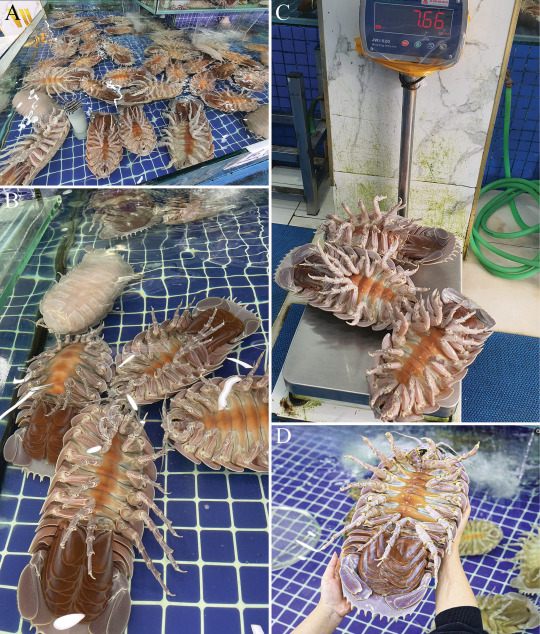
-Seafood market in Hanoi, Vietnam, selling the newly described Bathynomus jamesi. Large specimens exceeding 2 kg in weight command premium prices.
In Vietnam, Bathynomus species, are often referred to as "sea bugs". Their unique appearance and large size make them a delicacy, and they can command high prices, with larger individuals of B. vaderi reaching up to 2 kg. In recent years, demand for these creatures has risen, especially in urban centers like Hanoi and Hồ Chí Minh City, where they are displayed in restaurants and sold through online seafood markets. This growing industry highlights the continued fascination with deep-sea species and the need for ongoing research to better understand their ecology and conservation.
Main photo: Bathynomus vaderi, male, colour in life. Photo by Nguyen Thanh Son
Reference (Open Access): Ng et al., 2025. A new species of supergiant Bathynomus A. Milne-Edwards, 1879 (Crustacea, Isopoda, Cirolanidae) from Vietnam, with notes on the taxonomy of Bathynomus jamesi Kou, Chen & Li, 2017. ZooKeys.
#Bathynomus vaderi#cirolanidae#crustacea#isopoda#animals#new species#marine science#science#marine biology#biology#sciblr#scienceblr#ecology
36 notes
·
View notes
Text

Strange Symmetries #13: The Hermit Crab Cycle
Hermit crabs are crustaceans that first appeared at the start of the Jurassic, about 201 million years ago. Despite their common name they aren't actually true crabs, instead being a classic example of convergently evolving a crab-like body plan via carcinization.
They also have noticeably asymmetric bodies, with abdomens that coil to one side and differently-sized front claws.

Pagurus bernhardus by Arnstein Rønning | CC BY 3.0
And while modern hermit crabs are famous for inhabiting scavenged snail shells, their fossil record suggests this wasn't always the case.
Originally, they seem to have lived in ammonite shells.
Palaeopagurus vandenengeli lived in what is now northern England during the Early Cretaceous, about 130 million years ago. Around 4-5cm long (~1.6-2"), it was found preserved inside the shell of the ammonite species Simbirskites gottschei.
Its left claw was much larger than its right, and together they would have been used to block the shell opening when it was hiding away inside. And while the exact shape of its abdomen isn't known, it probably asymmetrically coiled to the side to accomodate the spiralling shape of the host shell.
Hermit crabs seem to have switched over to using gastropod shells by the Late Cretaceous, around 90-80 million years ago, possibly due to marine snails developing much stronger sturdier shells during this period in response to the increasing prevalence of specialized shell-crushing predators. The more upright snail shells would also have been much easier to drag around the seafloor than ammonite shells – and meant that they were ultimately less affected by the total disappearance of ammonites during end-Cretaceous mass extinction.
———
NixIllustration.com | Tumblr | Twitter | Patreon
#science illustration#strange symmetries#paleontology#paleoart#palaeoblr#palaeopagurus#paguridae#paguroidea#hermit crab#anomura#decapod#crustacea#arthropod#invertebrate#art#carcinization
1K notes
·
View notes
Text
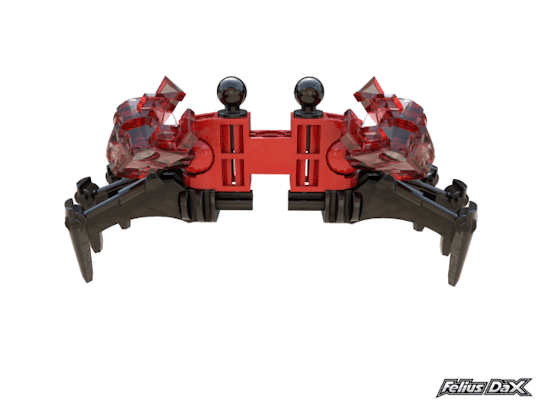
Good Crab 🦀 13 pcs/pzs
172 notes
·
View notes
Text


Spec evo terrestrial ostracods.
First one is a small detritivore hiding in mud, leaf litter and rotten wet wood.
Second one is a small predator that hunts other terrestrial ostracods, woodlice and insect larvae.
#speculative paleontology#spec evo#speculative evolution#speculative biology#ostracoda#crustacea#crustacean#not a real crab tbh#funny guys
22 notes
·
View notes
Text
call this pink coralline alga the apple store circa 2009. the way it's got ipods in it
33 notes
·
View notes
Text


Photos 1-2 - Specimen 1
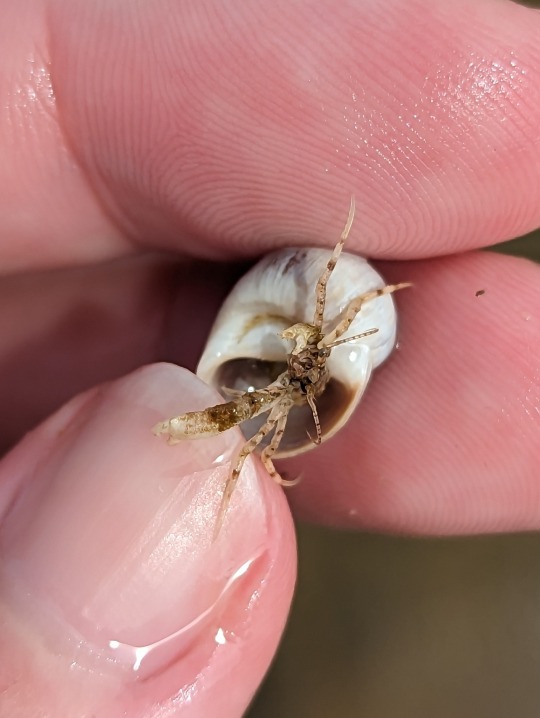

Photos 3-4 - Specimen 2


Photos 5-6 - Specimen 3
D. senex hermit crabs residing in empty Moon Snail shells.
13/08/23 - Diogenes senex
QLD:WET - Flying Fish Point, low tide sandy bay
#invertblr#invertebrates#Arthropods#Arthropoda#Diogenes senex#Paguroidea#Hermit Crabs#Decapoda#Decapods#Crustacea#Crustaceans#hermit crabs#crabs
63 notes
·
View notes
Text
#crustacean#crustaceans#crustacea#arthropods#shrimp#prawns#crab#lobster#crayfish#shrimps#lobsters#crawfish#isopods#barnacle#prawn#arthropod#fish#silly#garlic bread#🍉🦐🍉
21 notes
·
View notes
Text
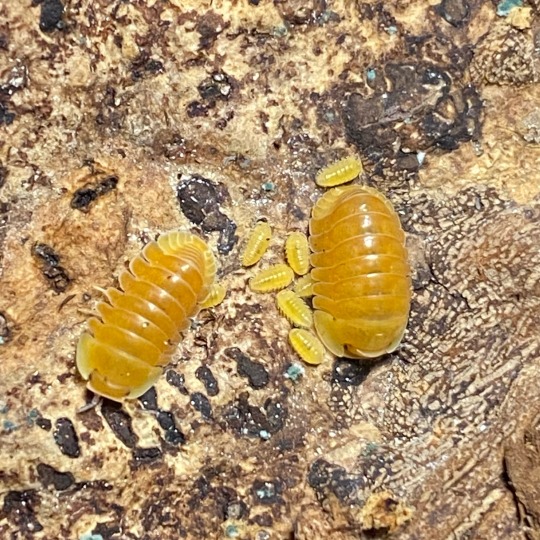

an exciting surprise!! my blonde duckies produced their first offspring!
#upload#isopods#rubber ducky isopod#isopoda#crustacea#animalia#invertebrates#pet isopods#cubaris#cubaris sp
33 notes
·
View notes
Photo
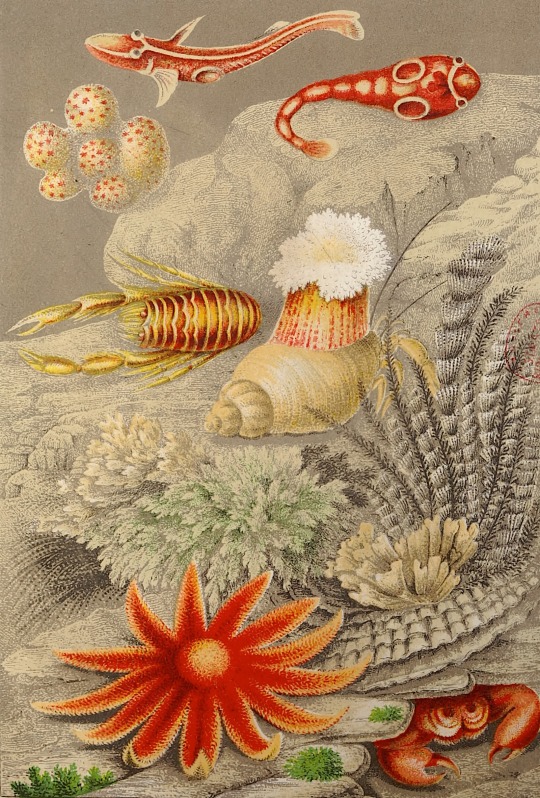
Wanderungen am Meeresstrande - Hermann Wagner - 1869 - via Staatsbibliothek zu Berlin
228 notes
·
View notes
Text

Sapphirina spp.
Photo by Solvin Zankl
#sapphirina#sea sapphire#sapphirinidae#copepods#marine#ocean#sea#marine life#marine invertebrates#crustacea#crustaceans#macro photography#animals#nature
24 notes
·
View notes
Photo

A red reef lobster (Enoplometopus occidentalis) off the coast of Kona, Hawaii, USA
by Pierrette Wagner
#red reef lobster#reef lobsters#lobsters#crustaceans#Enoplometopus occidentalis#Enoplometopus#decapoda#Malacostraca#crustacea#arthropoda#wildlife: hawaii#wildlife: usa
444 notes
·
View notes
Photo

..
#dark academia#animals#biology#natural history#decapoda#marine#crustacea#dark aesthetic#tiere#natural history museum#naturkunde#underwater#naturkundemuseum#museum aesthetic#museum#dark#dunkel#animal#tier#aquatic#biologie#arthropoda#frankfurt#academia aesthetic#crayfish#lobster#crab
24 notes
·
View notes
Text
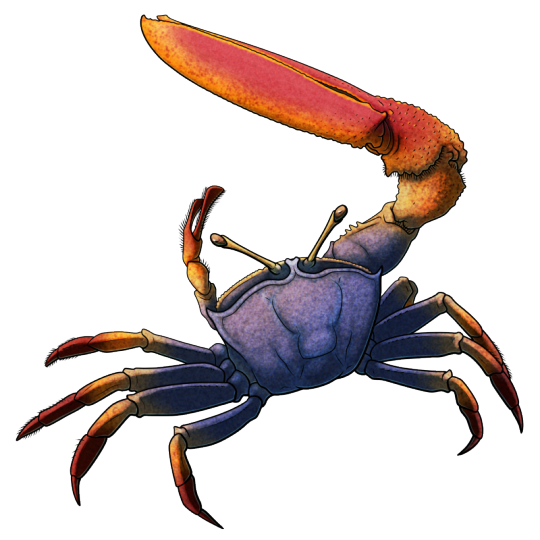
Strange Symmetries #20: The 16 Million Year Fiddler Crab Rave
Many decapod crustaceans have slightly asymmetrical pincers, often with one claw being chunkier and specialized for "crushing" while the other is more slender and used for "cutting".
But fiddler crabs take this sort of asymmetry to the extreme as part of their sexual dimorphism – males have one massively oversized claw, which is used for both visual display to potential mates and for physical fights against rivals.
Some of the earliest fiddler crabs are known from the Miocene of what is now northern Brazil. Although the fossils have been given several different taxonomic names since their discovery in the 1970s (including Uca maracoani antiqua, Uca antiqua, and Uca inaciobritoi) they're currently considered to be indistinguishable from the modern Brazilian fiddler crab, Uca maracoani, meaning that these crabs have remained externally unchanged for the last 16 million years.
Up to about 4cm in carapace width (~1.6"), modern Uca maracoani are found in coastal mangrove swamps and tidal mudflats around the northern and eastern coasts of South America – and some of these environments have also undergone little change since the Miocene. Males of the species can develop their enlarged pincer on either side of their bodies, with lefties and righties seeming to occur in equal numbers.
———
NixIllustration.com | Tumblr | Twitter | Patreon
#science illustration#strange symmetries#paleontology#paleoart#and also not paleoart#palaeoblr#uca maracoani#brazilian fiddler crab#fiddler crab#ocypodidae#brachyura#crab#decapod#crustacea#arthropod#invertebrate#living fossil#art#crab rave
324 notes
·
View notes